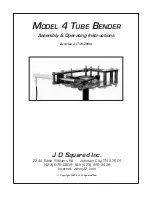
Chapter 27: Controller redundancy
• Network A is the EDGE automation network. The controller on this bus is the main and default
active controller
• Network S is the EDGE safety network. The controller on this bus is the backup and default stand-
by controller
• Controller 1 is the Main Controller and default active controller
• Controller 2 is the backup and default stand-by controller
• Network E is the Ethernet network
• A modem and access to the cloud is optional, but is needed to use the remote access feature
Once you have correctly connected the system, controller pairing is automatic. The two controllers share
the same house/barn license when paired. The two controllers also share the same configuration, equip-
ment, and settings; only one of the two needs to be configured.
Once controllers are paired, the system automatically assigns which controller is the default active con-
troller, and which one is the default stand-by controller.
For a redundant system to work correctly, the following criteria must be met:
• The active default controller is wired to the EDGE automation network
• The stand-by default controller is wired to the EDGE safety network
• Only one Edge network must be wired to each controller
• The active default controller is the controller with the house/barn license
Active controller characteristics and functions
• Runs the EDGE system logic and controls the modules
• Is the controller to which you connect when accessing EDGE remotely
• Has the same user interface as a single (not paired) EDGE system
• • Gives access to all settings
Stand-by controller characteristics
• Constantly monitors its own EDGE network but does not participate in the system logic (only the
active default controller reads the inputs and dictates what the output states should be)
• Shows all system states, and allows daily chores to be performed through the main screen and the
operation pages. The System configuration and Setup menus are not accessible on the stand-by
controller
• It is not accessible by remote access
The stand-by controller functions as a remote display which monitors the state of the system. If the active
controller fails, the stand-by controller takes the role of the active controller by taking control of the mod-
ules and the system logic.
The controllers share a license, and configuration. They are both ready to change functions when need
be (from active to stand-by or from stand-by to active). To coordinate their respective functions, active
and stand-by controllers exchange information on both the Ethernet and EDGE networks.
178
895-00693
EDGE
Summary of Contents for EDGE 890-00601
Page 16: ...Chapter 1 Introduction 16 895 00693 EDGE...
Page 22: ...NOTES 22 895 00693 EDGE...
Page 26: ...Chapter 2 Basic connections Figure 2 1 EDGE 3 Slot Expansion Box 26 895 00693 EDGE...
Page 44: ...NOTES 44 895 00693 EDGE...
Page 52: ...NOTES 52 895 00693 EDGE...
Page 60: ...NOTES 60 895 00693 EDGE...
Page 76: ...NOTES 76 895 00693 EDGE...
Page 108: ...NOTES 108 895 00693 EDGE...
Page 110: ...Chapter 11 Test mode 110 895 00693 EDGE...
Page 128: ...NOTES 128 895 00693 EDGE...
Page 132: ...NOTES 132 895 00693 EDGE...
Page 138: ...NOTES 138 895 00693 EDGE...
Page 140: ...NOTES 140 895 00693 EDGE...
Page 142: ...NOTES 142 895 00693 EDGE...
Page 146: ...NOTES 146 895 00693 EDGE...
Page 150: ...NOTES 150 895 00693 EDGE...
Page 154: ...NOTES 154 895 00693 EDGE...
Page 156: ...NOTES 156 895 00693 EDGE...
Page 158: ...NOTES 158 895 00693 EDGE...
Page 176: ...Chapter 26 Test mode 176 895 00693 EDGE...
Page 188: ...NOTES 188 895 00693 EDGE...
Page 192: ...NOTES 192 895 00693 EDGE...
Page 194: ...NOTES 194 895 00693 EDGE...
Page 202: ...NOTES 202 895 00693 EDGE...
Page 204: ...NOTES 204 895 00693 EDGE...
Page 206: ...NOTES 206 895 00693 EDGE...
Page 214: ...NOTES 214 895 00693 EDGE...
Page 216: ...NOTES 216 895 00693 EDGE...
Page 218: ...NOTES 218 895 00693 EDGE...
Page 220: ...NOTES 220 895 00693 EDGE...
Page 224: ...NOTES 224 895 00693 EDGE...
Page 226: ...NOTES 226 895 00693 EDGE...
Page 230: ...NOTES 230 895 00693 EDGE...
















































